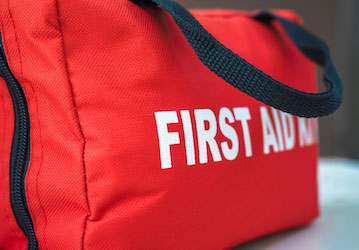Service Members are required to maintain high levels of physical fitness and skill in order to be mission ready. But sustained intense training, high optempo, and little time for rest and recovery can create the perfect storm for injury. Injuries pose serious challenges to military readiness through lost duty days and suboptimal performance, yet Service Members don’t seek help as often as they should.
Musculoskeletal injury (MSK-I), which accounts for more than 2 million military medical encounters a year, is the leading cause of lost-duty time and disability-related discharges—and the top threat to military readiness. (On deployment, non-battle injury is the leading cause of medical evacuation from theater, accounting for 35% of all MEDEVACS, compared to 16% for battle injuries.)
Part of the stigma around reporting injury or illness is being seen as weak or soft for seeking help. In one study of Army Infantry Soldiers, nearly half of all injuries went unreported. Common reasons the Soldiers gave for not reporting their injuries included fear of the injury impacting their careers and wanting to avoid a profile.
The “never-quit, never-give-up, mission-first,” culture can spur beliefs that hinder proper reporting and treatment of injuries. Below are a few examples of common beliefs that could prevent coping with injury, and suggestions for more adaptive, productive ways to view those beliefs.
|
Common belief |
Where does this belief come from? |
How is it harmful? |
Try this instead |
|---|---|---|---|
|
“Pain is weakness leaving the body” Or “Pain is just part of the job” |
Warfighters believe physical stress builds resilience and toughness. Service Members regularly encounter situations that require them to lean into discomfort to accomplish the mission. |
Overtraining is a common issue among Warfighters. Pain is often the first sign that something’s wrong with your body. Normalizing pain by seeing it as “just part of the job” can cause more severe injuries, possibly leading to the negative profile you were trying to avoid. |
By strengthening connections with your body, you can better understand its limits. Use tools such as progressive muscle relaxation (PMR), breathing, and “unplugged” workouts to better tune in to the signals your body sends and what they mean. |
|
“Rub some dirt in it; it’ll be fine” |
Most Warfighters are self-reliant problem solvers, taught from the first days of training to find quick solutions. |
Navigating the medical health system can feel stressful or intimidating. You might convince yourself that if you ignore an injury or leave it alone, it will eventually get better, which might delay you in seeking care for your injury. |
Gain a better understanding of which resources to seek out—and when.
|
|
“Suck it up and drive on” |
Warfighters sometimes struggle with understanding “when to grit and when to quit.” You might not be willing to take a knee because you feel committed to your team and the mission. |
Sucking it up can get you back in the game quickly or help you endure for a bit more time, but it also can lead to more serious injuries (perhaps even a career-ending one) and more down time. |
When injuries occur that are more serious, shift your thinking from short-term to long-term outcomes. Briefly taking a knee could be a better choice if the alternative is a longer recovery or permanent disability. Would your team rather have you back in the fight at partial or at 100% capacity, performing optimally? |
The high number of injuries reported each year likely just scratch the surface of the true impact MSK-I has on readiness. Even if you’re not injured, one of your squadmates might be. If you think one of these common beliefs might be preventing a squadmate from seeing medical, try to coach him or her with the strategies provided above. Remember, being injured doesn’t make you soft. But delaying care for your injury can make you ineffective and not combat ready if you aren’t at 100%.
